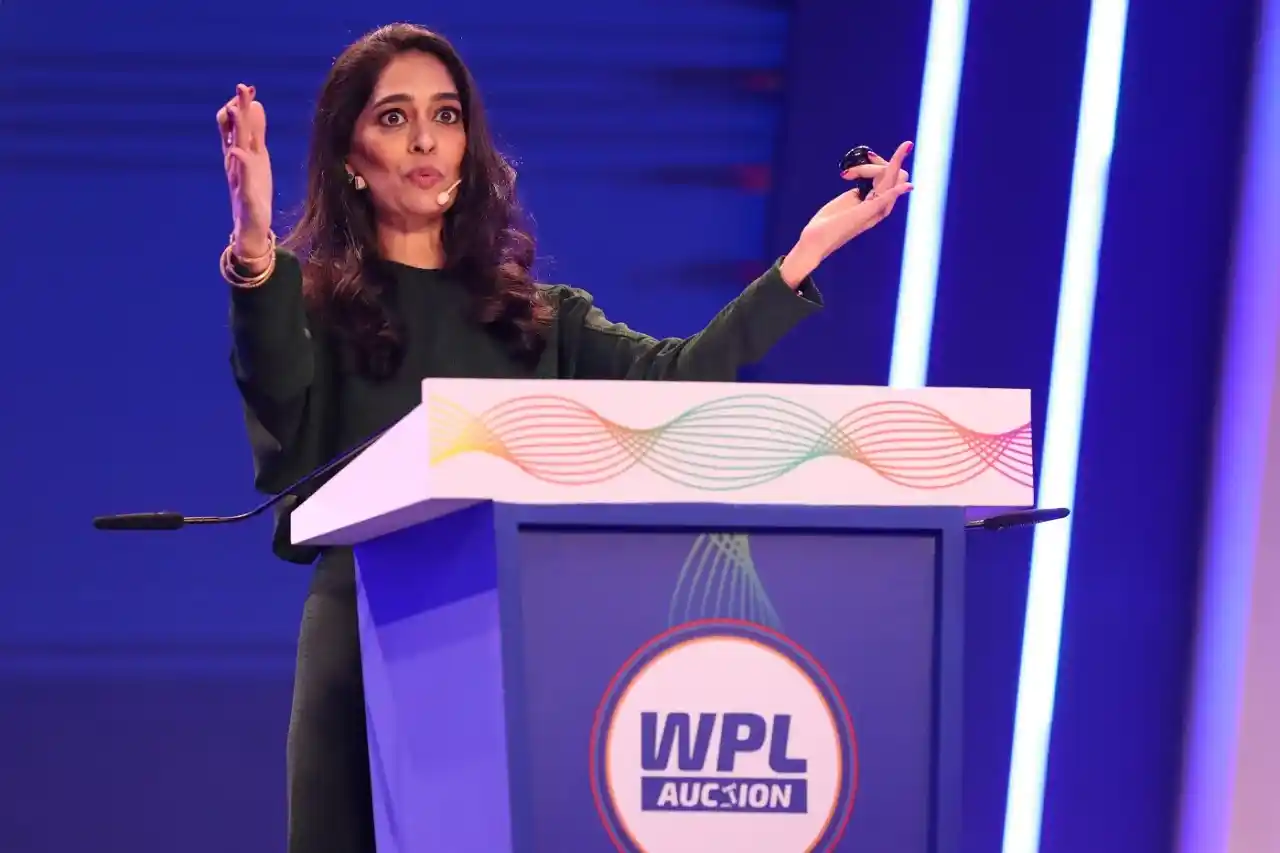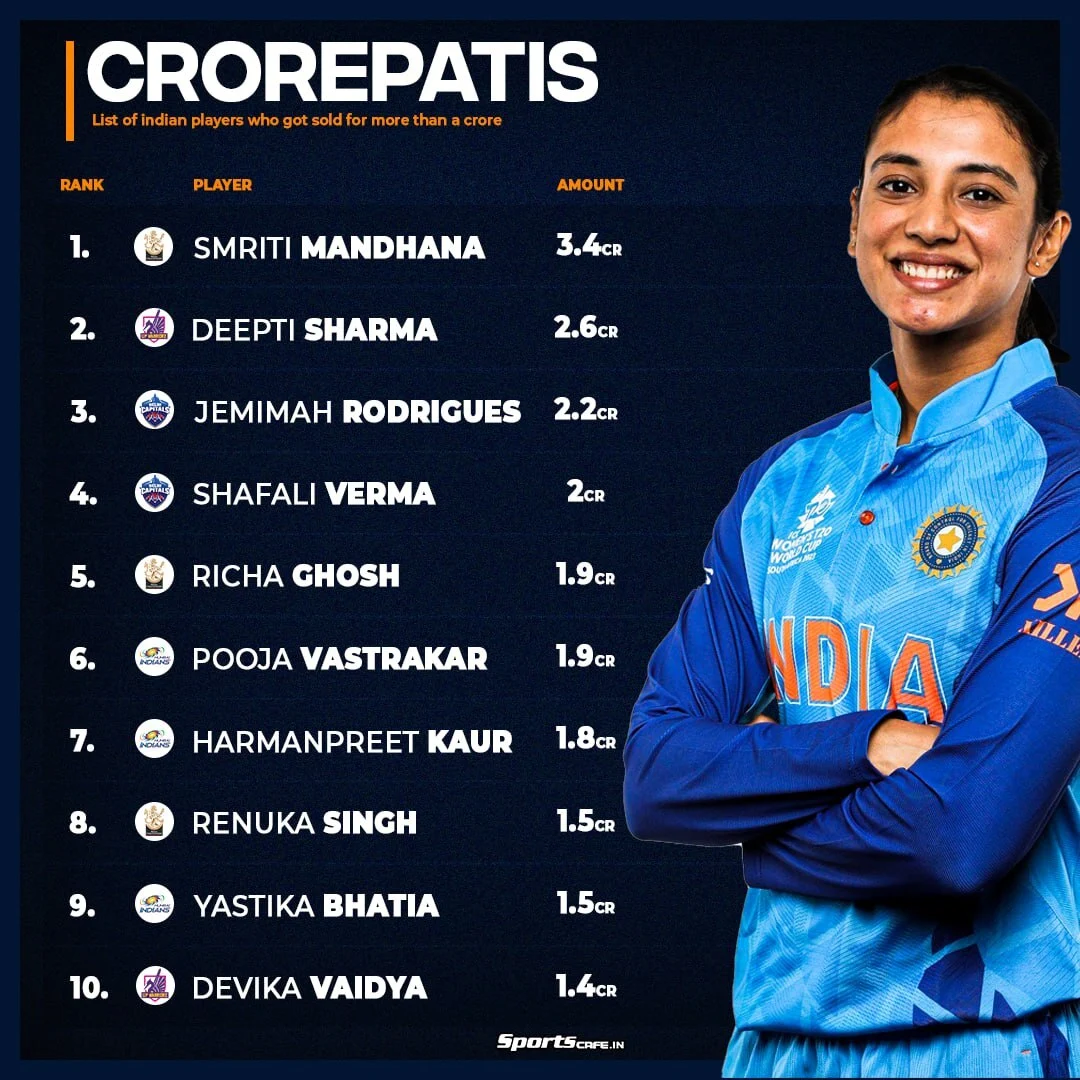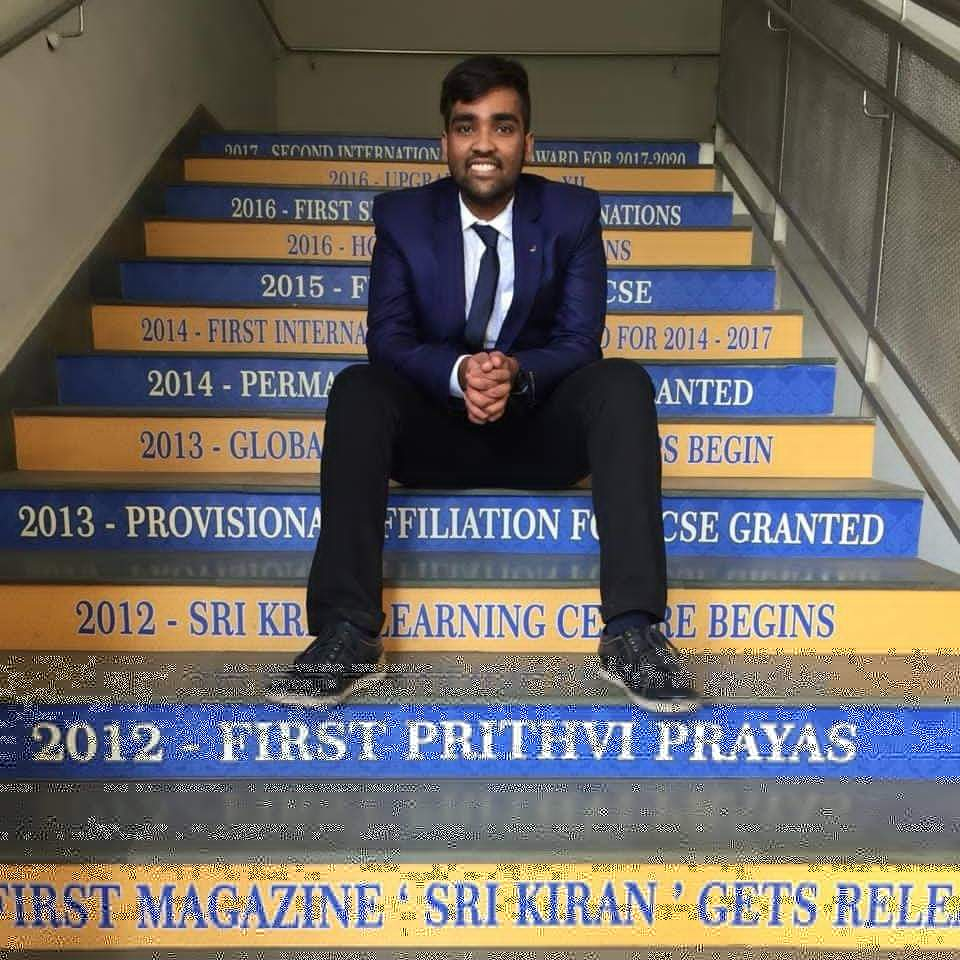Women’s Premier League Auction: The imperfect execution of a perfect opportunity

By investing their time and money in it, the WPL was a definite step taken by the BCCI in their promise to live up to the ICC's expectations of furthering women's cricket across the globe. However, while the auction delivered financially, the core cricketing aspect lacked to a large degree.
The Women’s Premier League (WPL) auction on February 13 was earmarked as a watershed moment in women’s cricket, not just in India but across the globe. The precedent for what the tournament could culminate into had already been set time and again by the Indian Premier League (IPL) ever since the latter began in 2008. Not only had the tournament made several cricketers millionaires overnight but also gave a plethora of small-town players from rural India the platform to showcase their skills in front of hundreds of thousands.
The BCCI, however, chose a different path for the inaugural WPL, expectedly based on their learnings from the IPL. Unlike the pioneering men’s league, the auction for the newest cricketing venture did not have any preceding or succeeding drafts. There were simply five teams, each presented with a purse of INR 12 crores, allowed to buy anywhere between 15 and 18 players. It was all to play for in Mumbai on Saturday, elevating the stakes of the event even further.
However, given the novelty of the occasion and the inexperience of those sitting at the auction tables, gaffes were only inevitable as absurdities ran amok at the Jio World Centre. For instance, Gujarat Giants were close to sealing the deal for left-arm seamer Mahika Gaur for her base price of INR 10 lakh, but they either failed to notice they had filled their quota of six internationals or had no clue that the 16-year-old plies her trade for the UAE. When the franchise was informed by the auctioneer, in quite explicit terms too, that Mahika does not play for India, wry smiles spread across the faces of the stakeholders while Mithali Raj had a brief animated outburst, suggesting the latter as a more probable reason.
At one point, the entire room was left confused when the bidding for Yastika Bhatia began at INR 30 lakh, despite her base price being INR 40 lakh. Thankfully for all involved, it proved to be immaterial in the end given she eventually went for INR 1.5 crore but the situation could have become troublesome had the batter not secured any more than two bids. The insanity of the event peaked towards the end when the auctioneer gave her vote of thanks signaling an end to the bidding wars, only to be informed that Mumbai Indians were yet to fulfill the minimum quota of players. What followed was another accelerated auction round that led to the sales of Megan Schutt as well as the two youngest players set to participate in the WPL, Sonam Yadav and Shabnam Md Shakil.
While such organizational mistakes shed a negative light on the event and trigger a hint of mistrust amongst the audience, they rarely play any role in the long run. On the other hand, structural issues in the planning of the auction, and thereby the WPL at large, are inexcusable but unfortunately became increasingly evident on the historic Monday.
The dynamic of the auction from the get-go itself was entirely different because all the franchises started with a clean slate. In the inaugural IPL, teams were allowed to draft an icon player from the home states or cities even before the auction. The same practice was followed when two new teams were introduced in 2022, with the Lucknow SuperGiants and Gujarat Titans allowed to pick three marquee players from the market ahead of the auction. This ensured a fairer distribution of talent across the board to increase competitiveness and provide the teams with a base to build their franchises around. However, the apparent commercial bent of the WPL meant the absence of any such procedures. While it led to entertaining viewing with gung-ho bidding wars right from the start, it was a severe letdown from a cricketing standpoint.
To demonstrate the point, Smriti Mandhana, the first player in the auction, was snapped up by the Royal Challengers Bangalore for a record INR 3.4 crore, thereby raking up 28.33% of her team’s salary cap. In the 2023 IPL auction, that would have been equivalent to recruiting a player for nearly INR 27 crores – the most expensive buy instead was Sam Curran for a much cheaper INR 18.5 crores, worth 19.47% of the salary cap. Had the women’s teams instead opted for an equivalent sum as their men’s counterparts, the differential sum of INR 1.1 crore would have been enough to secure the services of Australian skipper Meg Lanning. If the 30-year-old’s average in 14 T20Is in India is anything to go by, it meant a potential 70 extra runs essentially for free for the team.

 The most expensive sales of the first ever WPL auction © Sportscafe
The most expensive sales of the first ever WPL auction © SportscafeYet, perhaps the fact that the RCB could build a brand around arguably the best-known Indian women’s cricketer while grabbing headlines all over was worth more to the franchise. It seems to be no coincidence that Smriti was chosen by Bangalore, given she wears the number 18 on her back as a tribute to Virat Kohli, the commercial superstar that skippered RCB for over a decade. The fact that cricket took a back seat at times was made even more evident when the likes of Sri Lankan captain Chamari Athapaththu and New Zealand’s sensation Suzie Bates failed to attract any bids at all. While the former is ranked number nine as a batter in T20Is by ICC and has excelled in tournaments such as the CPL and the BBL, Bates is the highest run-getter in WT20Is of all time. Still, the duo barely hold any commercial value.
Something that indeed was similar between the inaugural WPL and IPL auctions was the number of players sold – 87 in the former, 89 in the latter. However, while the WPL teams had a squad limit of just 18, the eight pioneering IPL teams could maintain squads of 30. Even though the maximum strength has now been curtailed, a contingent of 25 players still seems like a healthy number for a two-month T20 league. Moreover, the men’s sides were allowed to contract any Indian players they wanted in the inaugural season, as long as they did not breach the squad limit or the salary caps. On the other hand, the auction was the end-all and be-all for the women's teams with no scope of improving the squad beyond the one assembled in Mumbai. The limited purse of 12 crores further limited the WPL teams’ capabilities – two franchises failed to fill up their squads because they ran out of money, with the UP Warriorz only ending up with 16 players.
The large IPL squads ensure the recruitment of several fringe players as well as domestic names that are not expected to feature in games but can benefit from training and spending time with some of the best players in the world. Contrastingly, only seven of the 15 Indian players that recently dominated the U-19 Women’s World T20 were snapped up by the franchises, a fair way away from the 13 of the 15 winners of the 2008 U-19 World Cup that had managed to find a team before the first IPL. What it essentially means is possibly eight of the best young prospects in world cricket will not feature in the biggest women’s league in the world, even though it is taking place in their own backyard and was touted as one that would accelerate the development of young cricketers from the nation. Even a player in as red-hot form as Priya Punia, with 494 runs at a stellar average of 82.33 in the recently concluded Senior Women’s One Day Trophy, could not earn a WPL contract.
In fact, the small squad size made even the associate player rule appear completely gimmicky. The BCCI had allowed teams to field an extra international player apart from the four allowed as long as they did not belong to a full-member nation. However, USA’s Tara Norris ended up as the only associate player to receive a legal bid.
In fact, in hindsight the associate players' rule in no circumstance could have amounted to much given the huge gulf between the big three and other full members in women’s cricket, let alone associate nations. In the seven Women’s World T20s so far, Australia have won five while England and West Indies have one each. In fact, in the 12 ODI World Cups since 1973, only once has a team other than Australia and England emerged victorious – New Zealand in a freakish final in 2000. Thus, while IPL teams could afford to bet and invest on stars apart from the likes of Kohli, Glenn Maxwell and Jos Buttler in the form of West Indians Chris Gayle, Kieron Pollard, Dwayne Bravo, Protean AB de Villiers or Kiwi Brendon McCullum, the WPL was largely restricted to scrapping for proponents of the big three. The most expensive woman not belonging to the three was Marizanne Kapp, her INR 1.5 crores only good enough to place her joint 15th on the list. In fact, compatriot Shabnim Ismail and Kiwi Amelia Kerr were the only other two international players to be bought for a crore or more from outside the top three, who had a combined 17 crorepatis. Thus, it seems preposterous to think that a team wanting to win would have opted to bench an Indian player, no matter how raw, in favour of an associate player.
As much as the BCCI has to be blamed for these severe shortcomings, the teams themselves could have helped abate circumstances with better planning despite their inexperience and the novelty of the occasion. Once the five sides had set the precedent with incredulous bids for Mandhana, all teams continued to go big in the first two marquee rounds leading to several budget constraints later in the evening. There came a time when the names of Tammy Beaumont, Bates, and Katherine Brunt all came in quick succession, only to go unsold. Their absence would undoubtedly affect the league’s stature but more importantly, keep the young guns in the squad from learning the tricks of the trade from some of the world’s best.
On the flip side, though, the lack of planning in general also meant that the shrewder heads on the table managed to sneak absurdly cheap bargains. With no team having the capacity to indulge in bidding wars, the UP Warriorz secured the services of Alyssa Healy, the stand-in Australian captain at present and arguably the best wicket-keeper batter of the generation with a T20I strike rate of 128.26, for a meagre INR 70 lakh.
In the end, it was Bangalore that seemed to emerge with the best auction strategy. First, they acquired Kiwi Sophie Devine, the fourth-ranked batter and fifth-ranked all-rounder in the world, for INR 50 lakh after realizing their competitors were down and out in terms of budget. For context, Indian wicket-keeper Sushma Verma, with just 224 runs in 30 white-ball internationals at a strike rate of 81.57 and an average of 9.74, went to the Gujarat Giants for the same amount. However, RCB’s biggest steal came after all other teams filled up their six international slots in a hurry. In the latter stages, the Bangalore outfit acquired Australian pacer Megan Schutt, the fifth-highest wicket-taker in WT20I history, for her base price of INR 40 lakhs given they were the only team technically allowed to place a bid. The franchise could have even acquired any other unsold foreign player of their liking for her base price, including the likes of Sune Luus and Nonkululeko Mlaba apart from the others mentioned earlier, but instead chose to bolster their Indian contingent.

 10 Indians went for a crore or more in the inaugural WPL auction © Sportscafe
10 Indians went for a crore or more in the inaugural WPL auction © SportscafeNevertheless, beyond all the absurdities and anachronisms, 87 players were sold for INR 59.5 crores on Monday while the likes of Mithali Raj, Rachael Haynes, Jhulan Goswami, Mahela Jayawardene, and Charlotte Edwards all converged in one room to kindle a new era in women’s cricket. Only time would tell whether the league goes bust or lives up to expectations, but one thing is for certain – the 87 women and 60 crores will inspire thousands of families and little girls around the world to believe that they can make a living by pursuing their dreams of wielding the bat and ball for the rest of their lives.

Comments
Sign up or log in to your account to leave comments and reactions
0 Comments